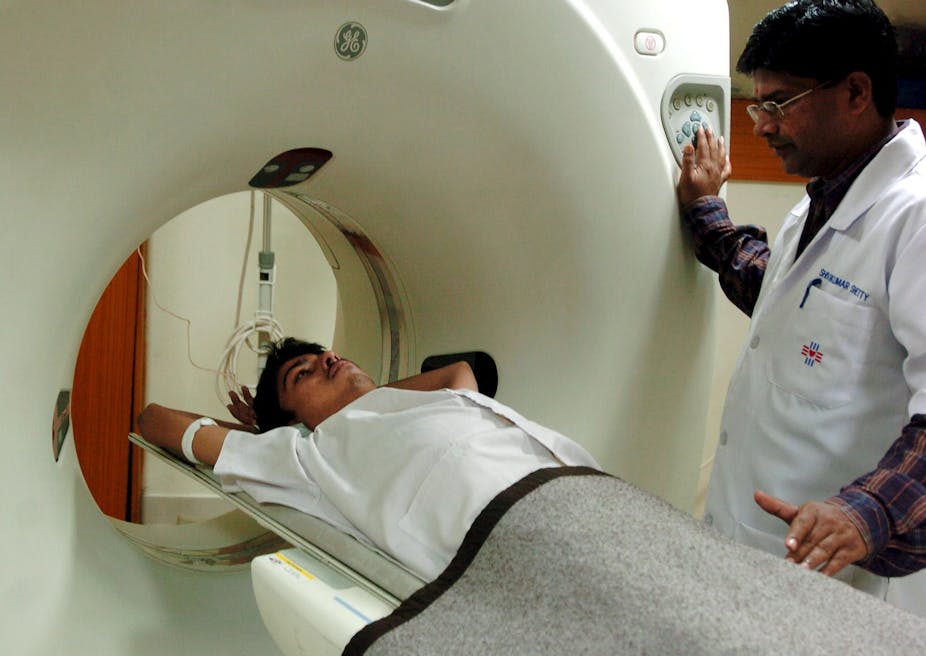Just two CT (computed tomography) scans of the head in childhood can triple the risk of brain cancer in later life, and as few as five to 10 scans can triple the risk of leukaemia, a study has found.
But an Australian expert says the risk posed by ionising radiation from the scans is well-documented, and that the study merely underscores the importance of using the technology only where strictly necessary from a clinical perspective.
The findings by researchers from the University of Newcastle in England, reported in The Lancet today, were based on a study of almost 180,000 patients who had CT scans between 1985 and 2002 at 70% of hospitals in Britain.
The absolute risk of developing the cancers remains small. For every 10,000 people under the age of 20 who receive 10 milligray from a CT scan, there will be one excess case of leukaemia, the researchers said. One additional brain tumour can be expected for every 30,000 who receive the same dose.
Use of CT scanning has increased drastically in the past 10 years, particularly in the United States, the team said. CT scans - a major advancement of 20th-century medicine - allow doctors to glean a much clearer picture of what is happening inside the body than conventional X-rays. But they also use a much higher dose of radiation. Calculations based on data from survivors of the atomic bomb attacks in Japan have been used by some scientists to suggest that CT scans could increase the risk of cancer in children.
Bruce Armstrong, a Professor of Public Health in the Sydney School of Public Health at the University of Sydney, said that “material increases in risk of brain tumour and leukaemia in younger people exposed to higher accumulated levels of ionising radiation from CT imaging are not unexpected and entirely consistent with what has been known for a long time about the cancer causing effects of ionising radiation.
"This work emphasises the very great importance of only using this form of imaging when it has a strong medical justification and in doing so in ways that minimise the amount to which the patient who is being imaged is exposed to the radiation needed to produce the required images.”
Study leader Mark Pearce, from the University of Newcastle’s Institute of Health and Society, called for further refinements to allow reduction in CT doses. This “should be a priority, not only for the radiology community, but also for manufacturers.
"Alternative diagnostic procedures that do not involve ionising radiation exposure, such as ultrasound and MRI (magnetic resonance imaging) might be appropriate in some clinical settings.”

